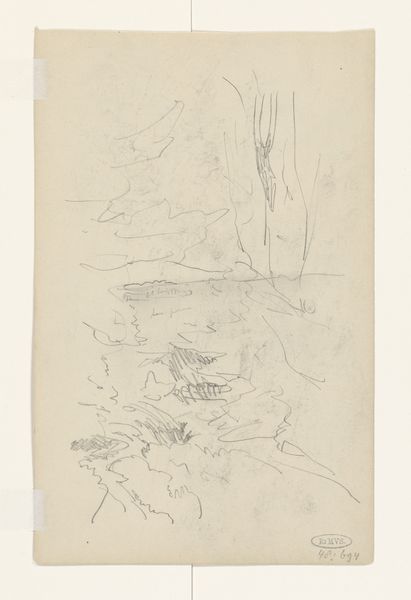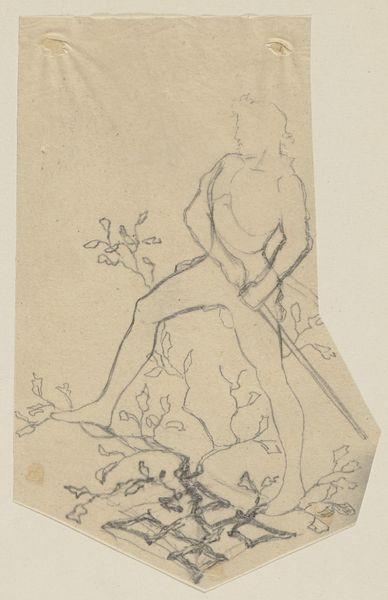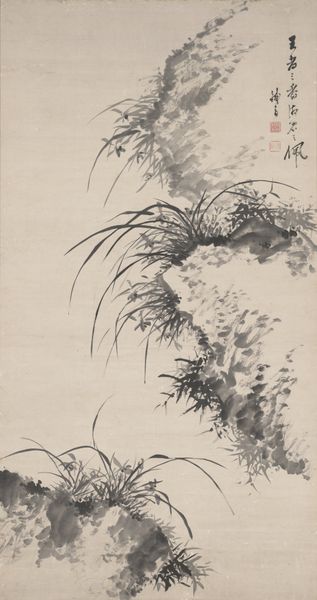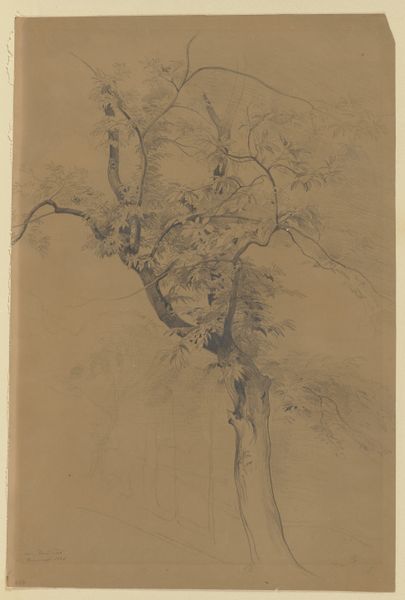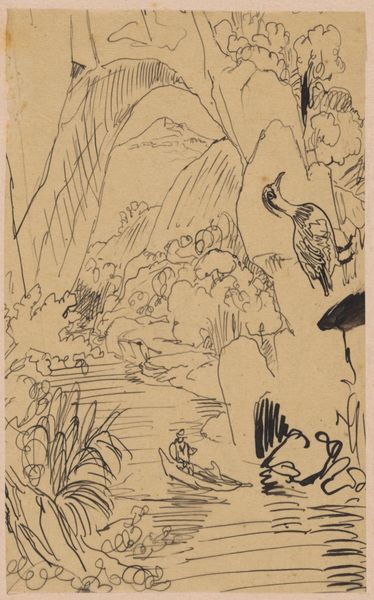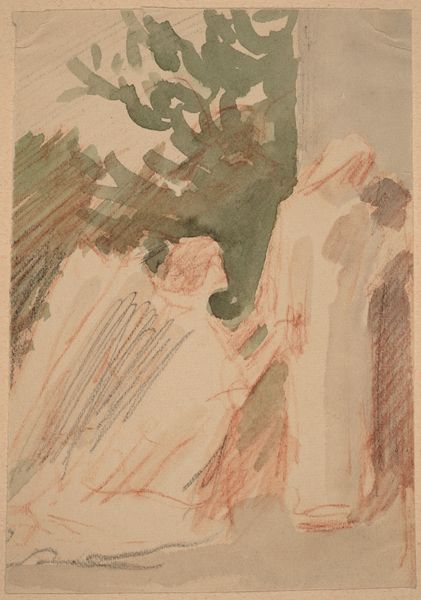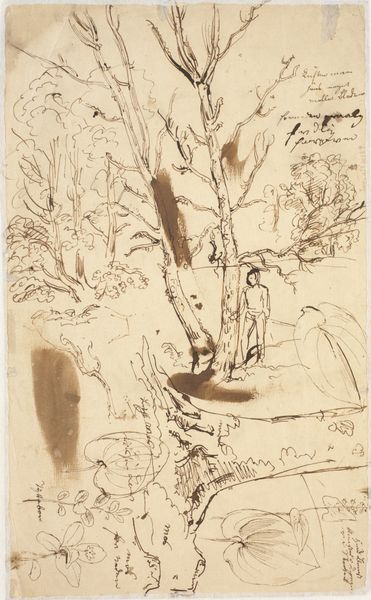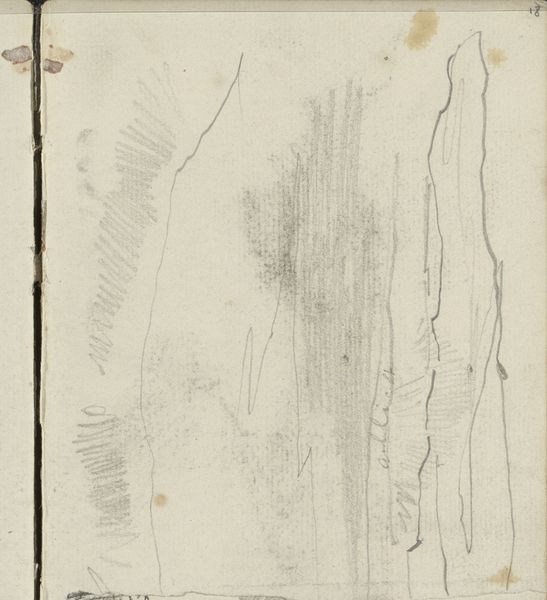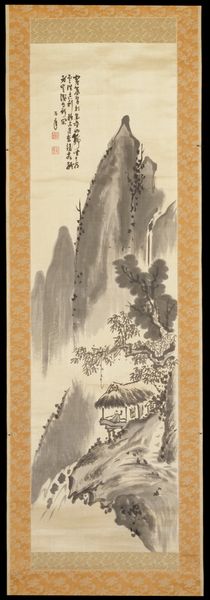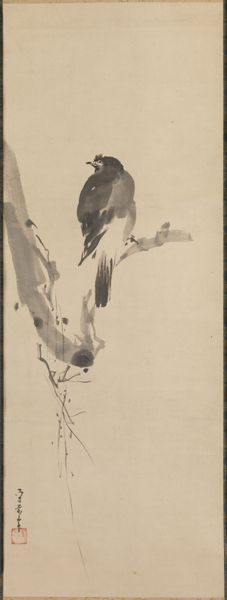
ink-on-paper, hanging-scroll
#
amateur sketch
#
light pencil work
#
pencil sketch
#
incomplete sketchy
#
japan
#
ink-on-paper
#
hanging-scroll
#
sketchwork
#
ink drawing experimentation
#
detailed observational sketch
#
sketchbook drawing
#
fantasy sketch
#
initial sketch
Dimensions: 17 3/16 × 8 7/16 in. (43.66 × 21.43 cm) (image)31 1/8 × 10 3/4 in. (79.06 × 27.31 cm) (mount)
Copyright: Public Domain
This ink on paper piece, attributed to Totoki Baigai, invites contemplation of Kannon, a Bodhisattva associated with compassion. Baigai lived during the Edo period, a time marked by relative peace and flourishing arts in Japan, yet also defined by rigid social hierarchies and isolationist policies. Here, Kannon is depicted seated on a rocky outcrop, a halo gently illuminating the figure. The monochrome palette lends a sense of serene detachment. Kannon, though a figure of Buddhist reverence, transcends gender, embodying both male and female qualities to represent universal compassion. The choice of ink reflects a cultural aesthetic that values subtlety, capturing the essence of the subject rather than its precise form. The surrounding natural elements – rocks, water, and foliage – situate Kannon within the larger cycles of life, death, and rebirth. This artistic choice encourages us to recognize the divine in the ordinary and the interconnectedness of all beings, reminding us that compassion is both a personal practice and a universal calling.
Comments
No comments
Be the first to comment and join the conversation on the ultimate creative platform.
